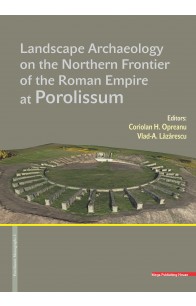Rezultate căutare pentru 'Ioan Oprea'
Instaurarea comunismului după 6 martie 1945 și apoi sovietizarea și comunizarea țării au dus la generalizarea și menținerea terorii și, în mod dramatic pentru uniți, la interzicerea Bisericii Greco‑Catolice prin Decretul nr. 358 din 1 decembrie 1948 impus de comuniști la ordinul lui Stalin, după modelul Ucrainei care a avut aceeași soartă cu doi ani înainte; or, tocmai abuzurile regimului au dat un sens particular rezistenței greco‑catolicilor din țară și din exil în raport cu sistemul totalitar.
De fapt, trebuie spus de la început că întregul cler greco‑catolic a avut de fiecare dată un singur deziderat, acela de a lupta pentru Biserica în Suferință și de a pleda pentru repunerea ei în drepturi, iar episcopii martiri au murit pentru a‑și apăra credința și Biserica, însă cererea de restituire a drepturilor Bisericii Greco‑Catolice a însemnat inclusiv contestarea legislației comuniste prin care s‑a decis interzicerea Bisericii Unite (și nu desființarea, întrucât canonic ea a continuat să existe), reclamarea încălcării libertăților confesionale și opoziția față de prigoana declanșată de instituțiile regimului comunist, ceea ce semnifică faptul că a fost contestat implicit regimul, metodele, instrumentele și instituțiile ororii „roșii”. Episcopul Ioan Suciu, administrator apostolic al Arhidiecezei de Alba‑Iulia și Făgăraș, a respins regimul instalat fraudulos, încă din aprilie 1948, printr‑un discurs virulent împotriva „adevărului” oficial, printr‑o ripostă din august același an la adresa „organelor reprezentative ale forței statului”, printr‑o predică din septembrie în care a criticat Legea Învățământului care suprima școlile confesionale; la toate acestea adăugându‑se ultima scrisoare, din 18 octombrie 1948, adresată Nunțiului Apostolic din România, în care a vorbit despre „persecuția violentă și generală” a organelor administrative ale Statului, a Siguranței Generale și a Partidului Comunist. (din „Introducere”)
„The frontiers of the Roman Empire, over 5000 km long, stretch from the Atlantic coast of Scotland, along the Rhine and the Danube, also enclose the Banat region and Transylvania, then going down along the Oriental Carpathians to the Black Sea; from the southern coast of the Black Sea they continue towards the Near East until the Red Sea; then, in North Africa, they line the edge of the Sahara desert until the Atlantic coast of Morocco. Over this entire area, visible traces of fortifications, roads and settlements are still preserved, but numerous monuments still lay hidden underneath the earth. Despite the fact that the Roman frontiers crossed regions with different relief and climate, they constitute a whole in that they were designed to protect Roman territories. The research of these monuments and the preservation policy regarding them was and is unequal in the various presentday states on whose territory traces of the Roman frontier are to be found. Consequently, in the ‘80s of the 20th century, the idea of globally protecting the Roman frontiers, viewed as a unitary monument, was met. In 1987, Hadrian’s Wall in United Kingdom was declared a UNESCO monument. It was followed in 2005 by the German-Raetian sector, on which occasion the UNESCO committee decided to set up the ‘Frontiers of the Roman Empire’ site. (...)
This project through its complexity generated an interdisciplinary approach of the proposed subject stimulating such future attempts in the archaeological research field. By using the latest technical methods of non-destructive investigation the project did not damage the stratigraphy of the archaeological site obtaining instead a high amount of data otherwise time consuming judging from the archaeological excavations perspective contributing also to the preservation of the cultural heritage.” - Introduction






